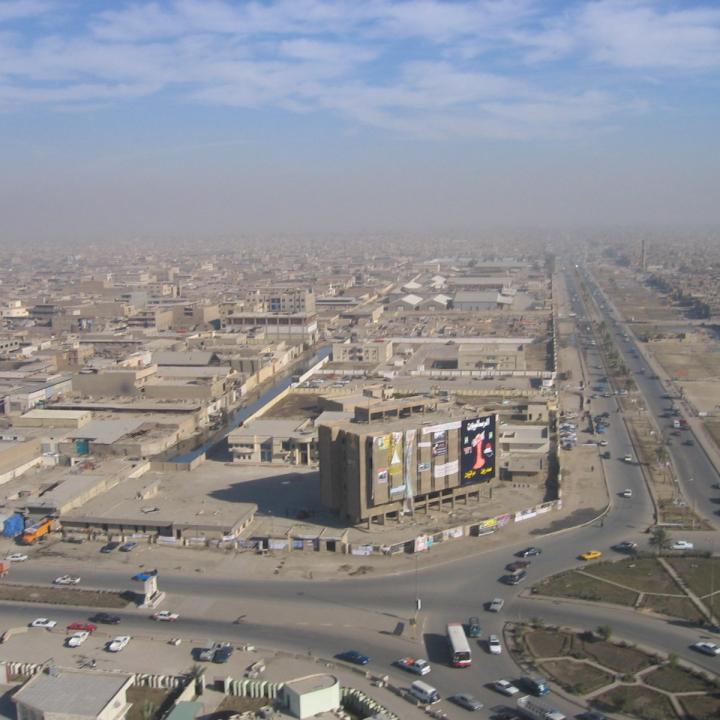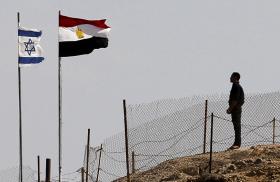
- Policy Analysis
- Fikra Forum
Addressing Iraq's Environmental Challenges: Population Growth

Solving Iraq’s demographic crisis will require immediate and comprehensive action at both the state and individual level. Without these solutions, we risk extensively harming our future generations.
Sadr City is Baghdad’s most densely populated neighborhood, with nearly three million people living in an area of less than 30 km2. Constraints on income and lack of housing often force multiple families to share one house, and overcrowding has put enormous strain on infrastructure, leading to chronic water scarcity and deteriorating sanitation networks. Economic opportunities are nonexistent; unemployment and poverty are rampant throughout the area. Yet despite the obvious pressures resulting from overpopulation, Sadr City’s population is continuing to grow at an alarming pace, and the neighborhood records some of the highest rates of early marriage, polygamy, and births outside of marriage. A study conducted by the Baghdad Women's Association and MercyCorps estimates that 10% of Sadr City’s community was married before reaching the legal age of 18 years old; The same study puts the polygamy rate at 20%. It is worth noting that the case of Sadr City, in terms of population density, isn't exceptional; it is findable in random residential areas in Basra, southern Iraq, and in other cities.
While many tend to view marriage and childbirth as intensely personal affairs, these social phenomena are having drastic effects on the entirety of Iraq’s development and future. In a country already struggling to provide housing, food, and education for its citizens, a high birth rate only intensifies the government’s woes. According to analysts, Iraq’s population will grow by one million year over year. In fact, the Iraqi Ministry of Planning recorded 1,258,028 live births in 2020. It is expected that the population will reach 80 million by 2050, putting Iraq on the edge of a socio-environmental abyss.
Other sources confirm the government’s alarming projections. According to the United Nations Population Division, Iraq’s population growth rate in 2023 is 2.27%, and the country’s current population (45.7 million) will more than double by the end of 2085. This population growth is particularly concerning in light of Iraq’s increasingly critical water shortages. The land once known as the Fertile Crescent is rapidly becoming drier, hotter, and less agriculturally productive. According to the United Nations Development Programme (UNDP) representative in Iraq, the country loses over 100 km2 of agricultural land annually–an area larger than Baghdad–due to climate change, desertification, and increasing temperatures of agricultural land. This poor environmental reality, coupled with the high fertility rate and growing water scarcity, poses an additional challenge for the irrigation of arable lands.
A ballooning population only exacerbates these environmental challenges facing Iraq. As climate change renders more and more agricultural areas barren, urban expansion is consuming more and more land to accommodate the growing population. In Mosul alone, the housing deficit reached 200,000 housing units in 2022, compared to nearly 20,000 units in 2012. According to the Urban Planning Directorate of Mosul, this tremendous speed of population growth requires expanding the city outward by seven kilometers at the expense of agricultural lands. It is noteworthy that the Nineveh Plain, with Mosul at its center, was once considered a breadbasket for the residents.
The Threat of a Food Crisis
Although overpopulation is particularly dangerous for Iraq, it is a global phenomenon. The 2008 financial crisis sent shockwaves through the global food supply chain and spurred increased environmental degradation through unsustainable agricultural practices such as overexploitation of land and agricultural chemical inputs to feed the world. However, the threats of large scale famine and food insecurity did little to decrease the unsustainable global birth rate. Since then, the world population has increased an average of 80 million annually–a million of these new births in Iraq alone, despite unprecedented decreasing of its natural resources due to the climate crisis.
While the effects of overcrowding vary in different regions, countries that rely on food imports, specifically grains and meat, are affected disproportionately. Iraq is one such country. With a population exceeding 45 million and the most rapid population growth in the region, it is one of the most vulnerable countries to climate change, as its arid and semi-arid lands are unable to provide for the population.
Despite the clear and present danger of overpopulation, the Iraqi government does not seem willing to adopt the radical policies necessary to ensure prosperity and sustainable growth, even as overpopulation poses serious threats to internal stability. In a country marred by economic troubles, the state is the largest employer. The influx of thousands of Iraqis into the job market each year could potentially fuel internal conflicts and increase the threat of terrorism, should the government prove unable to provide economic opportunities. In short, the train of reproduction in Iraq, considering climate change and resource scarcity, requires a radical change not only in managing resources and adapting to changing climate, but in all human activity, including reproductive behaviors.
In the natural world, a number of species—such as the lynx—adapt to the availability of an adequately supportive environment and avoid reproducing in situations where the environment cannot support the local population. Iraqis must be similarly mindful of the limits of their surrounding environments, or else risk a major food crisis and loss of life in the country.
Solving Iraq’s demographic crisis will require immediate and comprehensive action at both the state and individual level. The surge in population growth coincides with a notable absence of sex education and family planning, not just in Sadr City, but across the country. Such information is vital for helping families adequately plan for the future. For the state’s part, it must commit to building up infrastructure, investing in educational institutions, and ending early marriage and polygamy through interconnected policies in terms of civil laws, women's rights, and the socio-economic context of the country. In addition, involving women in environmentally responsible management of resources could be an asset in the path to healthy reproduction. In parallel, international efforts, primarily focused on implementing specific environmental improvements, must adjust to better align with these envisioned objectives.
In sum, a change in policy can avert a potential disaster—through advancements in reproductive health, putting an end to early and polygamous marriages, and raising the level of education, not to mention ensuring the freedom of women in making their own decisions in terms of reproduction. Without these solutions, we risk extensively harming our future generations.


